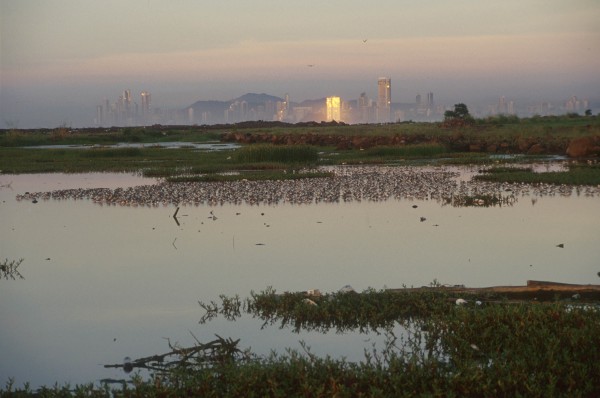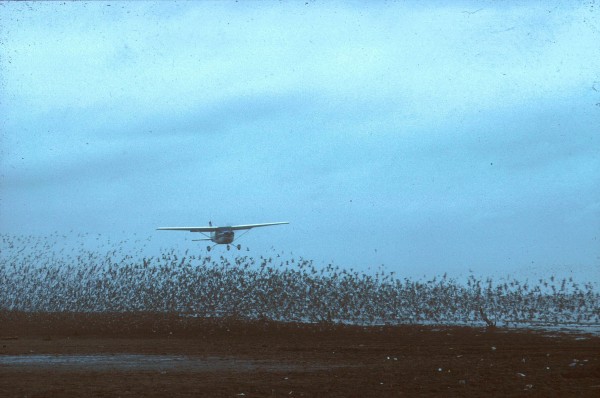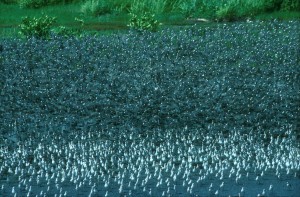Fall 2008 return to Upper Bay of Panama to reassess migrant shorebirds
Recovery Champion Award – award presented to W&M eagle scientists
June 7, 2008Singer James Taylor supports habitat for migratory birds
June 9, 2008
Written by Bryan Watts
June 8, 2008
The Panama Canal Zone and the greater Bay of Panama represents a continental crossroads where large numbers of intercontinental migrants converge. During the fall of 1997, the Center for Conservation Biology in collaboration with the Department of Defense Legacy Program and the Smithsonian Tropical Research Institute conducted the first systematic investigation of waterbirds within this region. The several lines of investigation under this project included weekly surveys to determine the abundance, phenology, and distribution of intertidal waterbirds. More than 2.5 million migrant shorebirds were recorded during aerial surveys. Results from this benchmark investigation were instrumental in 1) establishing the Upper Bay of Panama (Parte Alta de la Bahia de Panama) as a site of hemispheric importance within the Western Hemispheric Shorebird Reserve Network, 2) designating the site as an Important Bird Area with global significance, and 3) designating the area as a Ramsar site. These designations underscore that protection of the Upper Bay of Panama for migrating shorebirds is considered critical to their conservation throughout the Americas.

A flock of mostly western sandpipers on the marshy coastline in the foreground of Panama City, Panama. Photo by the Center for Conservation Biology.

Counting shorebird flocks by aerial survey. Photo by Bryan Watts.

Large shorebird flock composed mainly of western sandpipers, Panama Bay, Panama. Photo by Bryan Watts.
Much has changed within this location over the decade since surveys were conducted. During the fall of 2008, CCB will return to Panama City to reassess the status and distribution of shorebirds using the upper Bay of Panama. In addition to surveys within the inter-tidal zone, the nearshore mangroves and uplands will be surveyed to map and characterize communal roosts of waterbirds of conservation concern. Communal roosts are increasingly recognized as sites of unique significance for bird conservation. This effort will result in a report comparing the status of waterbirds within the upper Bay of Panama comparing the 2008 and 1997 surveys and the first digital atlas of communal roosts within the region.



